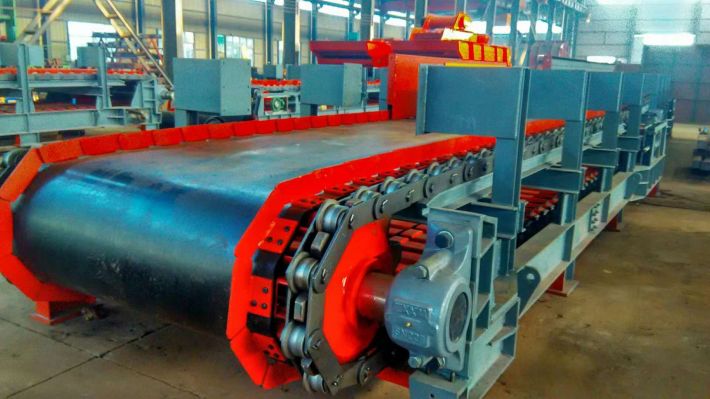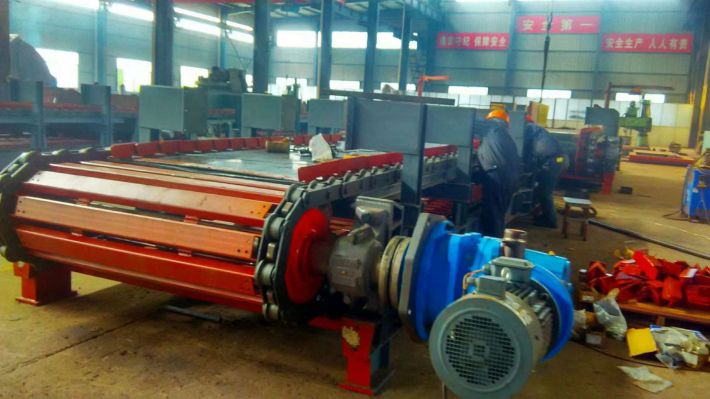Apron feeders are used to transport materials in bulk, often in harsh industrial environments. Efficient material flow rate control is essential to ensure the apron feeder operates safely and effectively
Why Control Material Flow Rate on Apron Feeders?
The material flow rate on an apron feeder must be controlled to prevent overloading or underloading, which can lead to damage to the feeder and its components or cause the material to pile up or spill over. Additionally, controlling the material flow rate on apron feeders can ensure that the material is being transported appropriately and efficiently, reducing the likelihood of congestion or spills.
5 Methods to Control Material Flow on Apron Feeders

Several methods can be used to control the material flow rate on an apron feeder, including the following:
- Variable Frequency Drive (VFD): A Variable Frequency Drive is a device that controls the speed of the apron feeder by adjusting the frequency of the power supplied to the feeder’s motor. This method allows for precise control over the material flow rate, making it ideal for applications that require constant processing rates or batch operations.
- Weighing Devices: Weighing devices can be installed on the apron feeder to enable continuous monitoring of the material’s flow rate. By calculating the mass flow rate and comparing it to the desired flow rate, adjustments can be made to the feeder’s speed to maintain the correct flow rate. This method is suitable for applications that require precise control over the material flow rate and where the material’s characteristics can vary significantly.
- Paddle Switches: Paddle switches are placed along the apron feeder’s width and are used to detect the presence of incoming material. If the material reaches a predetermined level, the paddle switch signals the feeder to stop the material’s flow by shutting it off or reducing its speed.
- Infrared Sensors: Infrared sensors can detect the material’s presence or absence on the apron feeder. This method allows the feeder’s speed to be adjusted based on the material’s position, allowing for precise control of the material flow rate.
- Flow Control Gate: A flow control gate can be installed at the apron feeder’s discharge end to moderate the material’s flow rate. This method is useful when the material’s characteristics cannot be accurately determined or when the material flow rate needs to be adjusted during operation.
4 Best Practices in Controlling Material Flow on Apron Feeders
To ensure efficient and safe operation of an apron feeder, the following best practices should be followed:
- Determine the Material Characteristics: The material’s characteristics, such as physical properties and flowability, should be accurately determined before selecting the appropriate method for material flow rate control.
- Regular Maintenance: Regular maintenance of the apron feeder, including its speed control mechanisms, is essential to ensure that they’re working effectively.
- Operator Awareness: Operators should be trained to recognize the signs of overloading or underloading and to react quickly to prevent feeder damage, material piling, or spillage.
- Regular Calibration: Equipment used to control material flow rate, such as weighing devices and infrared sensors, should be regularly calibrated to ensure accurate readings and proper operation.
Conclusion
Efficient material flow rate control is critical to ensure the safety and effectiveness of apron feeders. Different methods, including VFDs, weighing devices, paddle switches, infrared sensors, and flow control gates, can be used to control the material flow rate. It’s essential to follow best practices in apron feeder operation, including regular maintenance, operator awareness, and equipment calibration. By implementing these practices, apron feeders can operate efficiently and safely, reducing the likelihood of costly damage, spills, and downtime.
